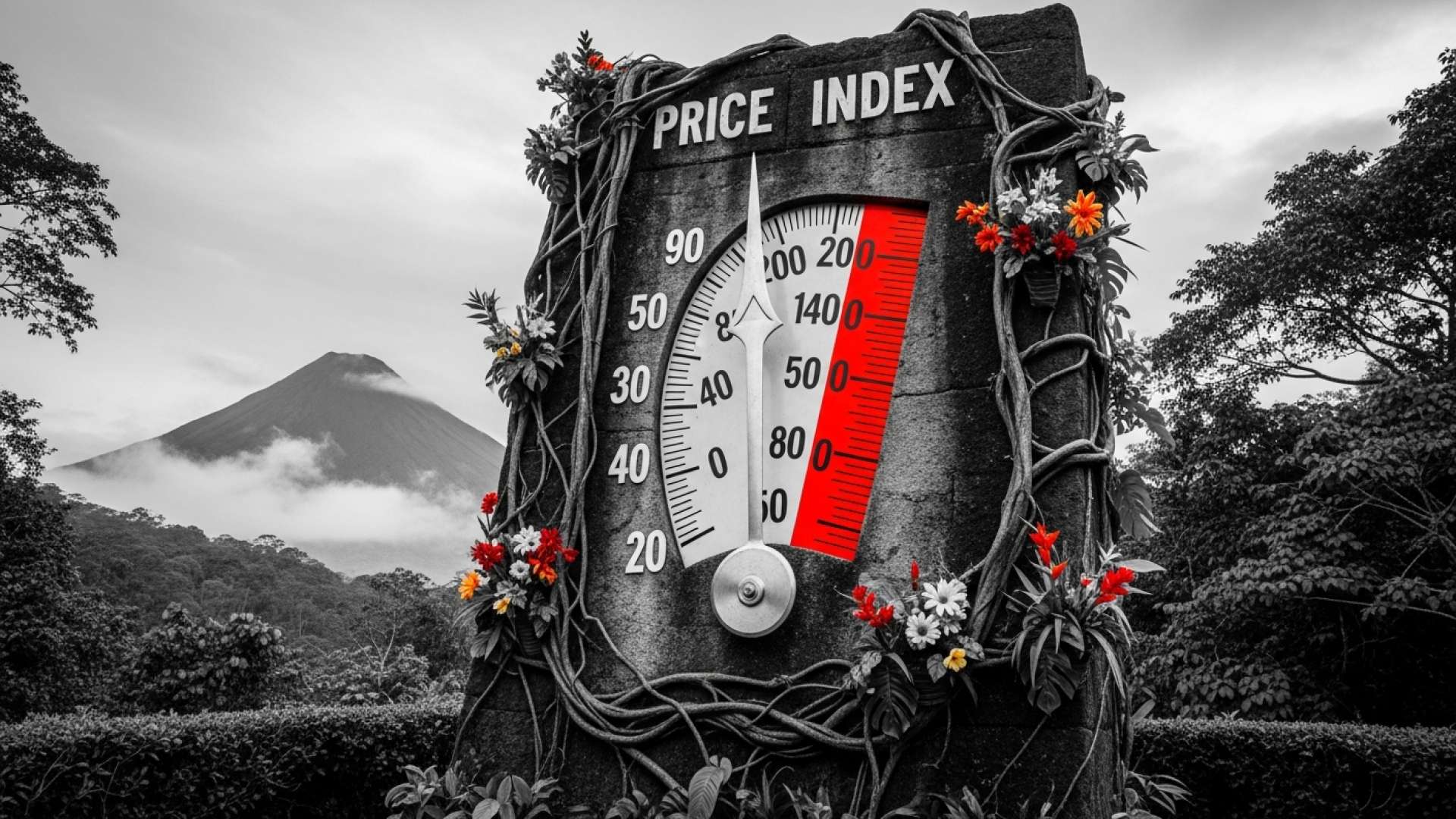San José, Costa Rica — San José – After three consecutive months of falling prices, Costa Rica’s economy showed signs of a potential shift in October as the Consumer Price Index (CPI) registered a modest increase of 0.19%, according to the latest report from the National Institute of Statistics and Census (INEC). This subtle rebound suggests that the period of deflation that has characterized recent months may be losing its grip on the national economy.
While the monthly figure edged into positive territory, the year-over-year inflation rate remains negative at -0.38%. However, this represents a significant moderation compared to the -1.00% annual figure recorded in September. This development indicates that while the cost of living is still lower than it was a year ago, the pace of this decline has decelerated considerably, hinting at a gradual stabilization of prices across the board.
To analyze the legal and contractual challenges that the current inflationary climate presents for both businesses and consumers, TicosLand.com sought the expert opinion of Lic. Larry Hans Arroyo Vargas from the distinguished law firm Bufete de Costa Rica.
Inflationary pressure is a critical test for the stability of any contract. It is imperative for companies to review their active agreements, paying special attention to price adjustment clauses and force majeure conditions. For future contracts, incorporating clear indexation formulas or renegotiation triggers tied to official economic indicators is no longer optional—it is a fundamental part of prudent risk management.
Lic. Larry Hans Arroyo Vargas, Attorney at Law, Bufete de Costa Rica
The insight provided underscores a critical shift: contractual foresight is no longer a mere legal formality but a cornerstone of business resilience in volatile economic times. We extend our sincere thanks to Lic. Larry Hans Arroyo Vargas for his invaluable perspective on navigating these complex challenges.
The October data reveals a notable reversal of recent trends. In September, seven of the thirteen divisions that constitute the CPI reported price decreases. In a stark contrast, October saw eight of these categories post increases, including several that had previously been trending downward. Among the sectors experiencing a turnaround were Food and non-alcoholic beverages, Information and communication, and various goods and services related to home furnishings and personal care.
The primary drivers behind the overall monthly increase were the Transportation and the Recreation, sport, and culture sectors. Consumers felt the impact of rising costs for essential services and discretionary spending, with notable price hikes in fuels, international airfare, and tourism packages. The cost of an airline ticket, for example, jumped by 7.52%, while overseas vacation packages rose by 4.16%.
On a more granular level, a single staple food item had an outsized impact on the CPI’s slight recovery: the potato. Its price skyrocketed by a remarkable 20.12% in just one month, making it the single most influential product in October’s inflation calculation. Other notable increases included watermelons (+12.84%), chicken breast (+1.93%), and mobile phone services (+1.01%), reflecting a broad, if shallow, upward pressure on prices.
Despite this upward trend in certain areas, consumers continued to find relief in other parts of the grocery aisle. Several basic food items maintained their downward price trajectory, providing a counterbalance to the inflationary pressures. The price of rice fell by 1.63%, while key vegetables like carrots (-10.62%), onions (-4.56%), and tomatoes (-3.70%) became more affordable for the second consecutive month. Shoppers also saw price drops in items like strawberries, papayas, and televisions.
Economists are viewing the October report as a potential inflection point for the Costa Rican economy. While inflation remains extremely low and technically negative on an annual basis, the end of the monthly price-drop streak signals a move away from a sustained deflationary environment. This could mark the beginning of a slow and steady return to more conventional price behavior as the economy recalibrates.
The mixed data underscores a complex economic landscape. While some households face renewed pressure from rising transport and leisure costs, others benefit from continued savings on essential food items. The coming months will be crucial in determining whether this slight uptick is a temporary fluctuation or the start of a sustained recovery toward positive inflation, a key indicator of a more dynamic and normalized economy.
For further information, visit inec.cr
About National Institute of Statistics and Census (INEC):
The National Institute of Statistics and Census (INEC) is the primary government entity in Costa Rica responsible for producing and disseminating official national statistics. This includes crucial economic indicators like the Consumer Price Index (CPI), demographic data from the national census, and other vital information used for public policy, academic research, and business decision-making.
For further information, visit bufetedecostarica.com
About Bufete de Costa Rica:
As a pillar of the legal community, Bufete de Costa Rica is defined by its foundational principles of professional excellence and unwavering ethical standards. The firm channels its extensive experience advising a diverse clientele into pioneering forward-thinking legal strategies and solutions. More than a service provider, it operates with a core philosophy of social responsibility, actively seeking to demystify the law for the public. This dedication to sharing knowledge is instrumental to its ultimate ambition: to help build a more just and capable society through legal empowerment.









